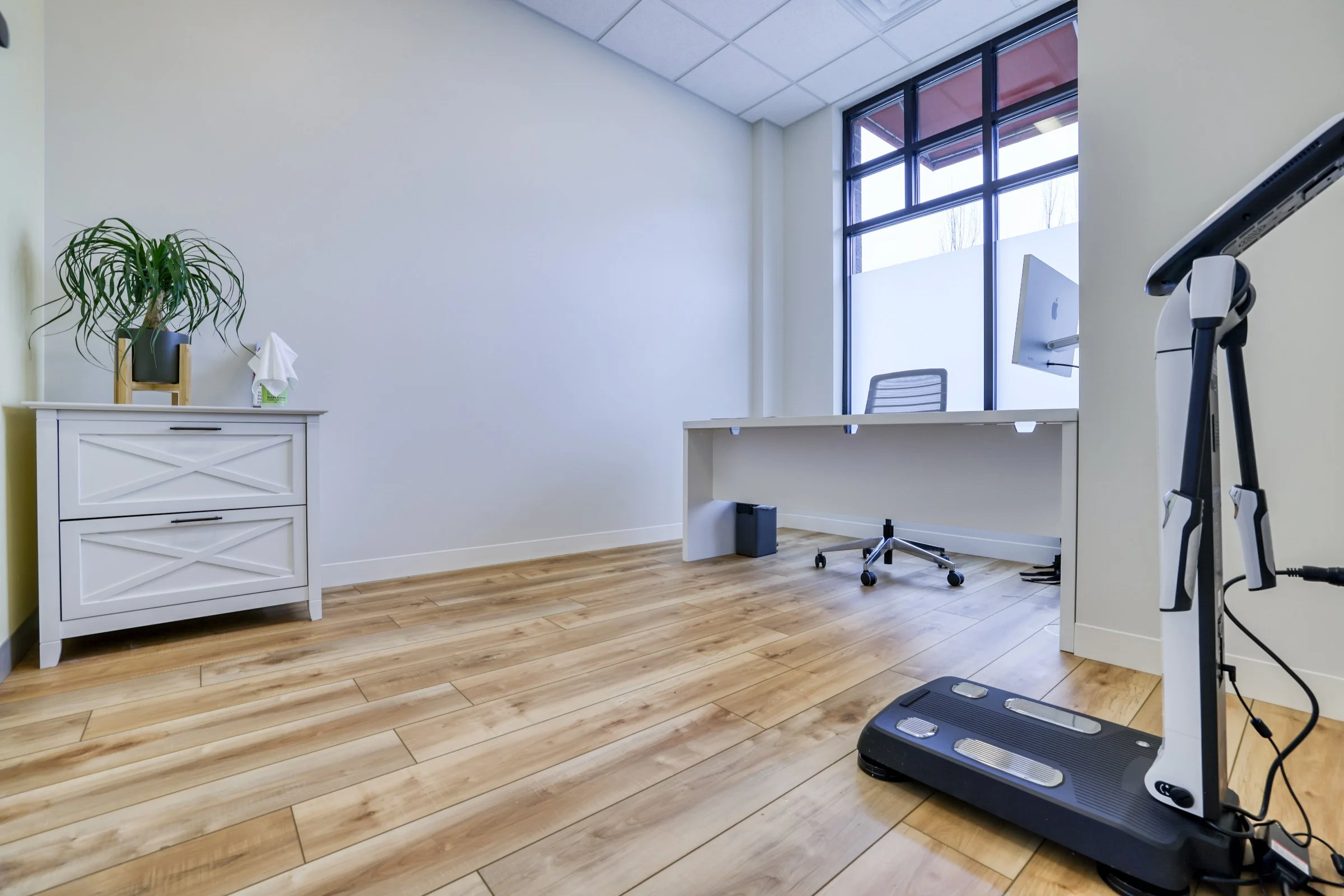Track What Matters: 3 Metrics to Guide Your Training and Recovery
Data-backed tools to monitor readiness, progress, and muscle health
Why the Right Metrics Matter
Whether you're training for a marathon, lifting for strength, or just trying to feel better day to day, knowing what to track is half the battle.
Too often, we get caught up in the wrong numbers—chasing weight loss, calories burned, or mileage totals. But those don’t always reflect the quality of your training or the state of your recovery.
As I prep for the Twin Cities Marathon this October, I’ve shifted my focus to three metrics that actually reflect how well my body is adapting to the work: Heart Rate Variability (HRV), Resting Heart Rate (RHR), and Body Composition.
These are the numbers that tell me whether to push or pull back—and they’re the same ones we use in-clinic to guide smart, long-term progress.
1. Heart Rate Variability (HRV): Your Recovery Dashboard
🧠 Measure how well your nervous system is handling training stress.
HRV is the variation in time between each heartbeat, measured in milliseconds. It reflects how adaptable your nervous system is—specifically your balance between sympathetic (fight-or-flight) and parasympathetic (rest-and-repair)states.
I check my WHOOP app every morning to assess my heart rate variability.
🔢 HRV Ranges to Know:
Average for active adults: 50–100 ms
Athletic high performers: 100–140+ ms
Below 30 ms: typically considered low and may signal poor recovery or high stress
Remember: HRV is highly individual—your personal baseline matters more than a global "ideal."
✅ What Improves HRV:
Consistent sleep
Breathwork or nasal breathing
Zone 2 aerobic training
Hydration + reduced alcohol/sugar intake
I check my HRV every morning. If it dips below my baseline for several days, I’ll adjust training volume or focus on recovery until it rebounds.
Check out my recommendations for tracking HRV below this next section 👇
2. Resting Heart Rate (RHR): Your Daily Readiness Gauge
❤️ A lower RHR = a more efficient heart and better aerobic conditioning.
Your resting heart rate reflects how hard your heart has to work when your body is completely at rest. Over time, it’s one of the best indicators of endurance capacity and systemic stress.
🔢 RHR Ranges to Know:
Athletes / Highly fit individuals: 40–55 bpm
Average adults: 60–75 bpm
Above 80 bpm: could indicate illness, low fitness, or overtraining
✅ What Improves RHR:
Aerobic fitness (Zone 2 work is key)
Strength training
Recovery practices (sleep, nutrition, hydration)
Stress management
My personal baseline is around 49–52 bpm. If I wake up and see 60+, that’s a red flag that I might be overreaching or not recovering fully.
📱How can you track HRV and RHR?
I personally track both using a WHOOP strap. My Garmin watch also tracks HRV and RHR, but the data can vary slightly between devices - so I recommend choosing one device and sticking to it for consistency.
3. Body Composition: Track Muscle, Fat %, and Progress That Matters
💪 Weight alone doesn't tell the story—body composition does.
We use body composition scans in the clinic to measure:
Muscle mass (lean tissue)
Body fat percentage
Segmental balance (upper vs. lower, left vs. right)
This data helps us see whether you're gaining strength, maintaining lean tissue, or losing excess fat—especially during high-output training like marathon prep.
✅ Why Body Composition Matters:
Lean mass supports better performance, recovery, and injury prevention
Helps assess if you’re losing fat or muscle during a cut or high-mileage phase
Provides more actionable data for nutrition and strength programming
In previous marathon cycles, I lost muscle mass when I let strength training slide. This time, with regular squats, bench press, and single-leg work, I’ve maintained muscle while increasing my mileage—and I feel stronger for it.
Final Thoughts: Train Smarter, Recover Better
You don’t need to track everything—but you should track the right things.
📊 HRV shows how well you’re bouncing back.
❤️ RHR tells you how your heart is handling the workload.
💪 Body composition tells you if your training is building or breaking down your body.
🔍 Ready to Track What Matters?
At Optimum Health, we use real performance data—not just weight—to guide strength, recovery, and nutrition plans that get results. We offer InBody body composition scans in-clinic to track:
Muscle mass
Body fat percentage
Segmental balance
Lean mass retention during training
📍 Book a Performance Consult or InBody Scan today to start measuring what actually matters.


